State-of-the-art helicopters ensure Malmstrom's position in the decades ahead
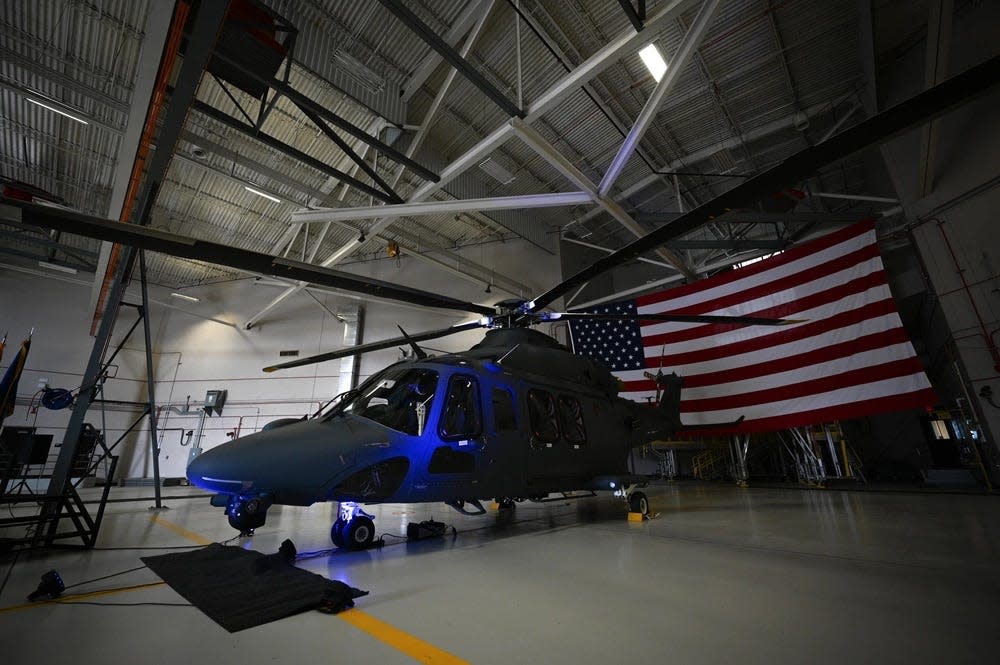
- Oops!Something went wrong.Please try again later.
After nearly a decade of testing and delays, Malmstrom Air Force Base in Great Falls became the first military installation in the U.S. to receive the next generation of support helicopters, the MH-139 Grey Wolf. Seven of the $29.8 million aircraft arrived at Malmstrom a week ago. Their arrival nearly guarantees a long-term commitment to Great Falls by the U.S. Air Force for decades to come.
At the beginning of a ceremony last Saturday the commander of Malmstrom’s 582nd Helicopter Group, Col. Philip Bryant, rose to touched the nose of one of the new helicopters before taking the podium.
“I just wanted to make sure it was real,” Bryant said.
“For all of the old Air Force “rotorheads” in the room, we understand what a big day this is,” he added. “Many of us have served out entire careers and are now in retirement, and never got to see this day. It is truly a momentous occasion.”
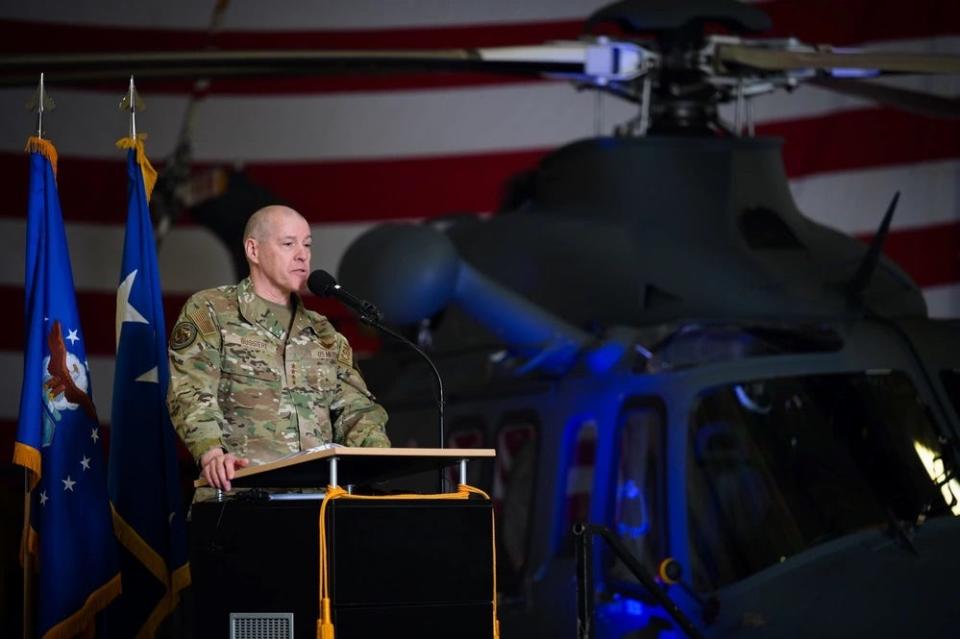
The Grey Wolves will be used to secure and transport airmen between missile launch sites, as well as providing airlift support for Montana’s 150 launch facilities. A total of 80 Grey Wolf helicopters are expected to be produced for the Air Force. Their intent is to support ICBM facilities in Wyoming, North Dakota, Colorado, and Nebraska as well as in Montana. These bases currently maintain a fleet of 63 Huey helicopters to meet that purpose.
Friday’s ceremony was both a celebration of the Grey Wolf’s arrival, as well as an acknowledgement of the Huey’s lifetime of service. The landmark "Huey" first entered operational service with the U.S. Air Force in 1970, and though it has been upgraded many times over the past 55 years its design is well past the expected operational lifetime.
“Having the distinction of being the only aircraft utilized by all branches of the Department of Defense including the Coast Guard, the Huey has served reliable with over 7,000 flying in Vietnam alone,” said Lt. Col. Tyler Williams, Malmstrom’s 550th Helicopter Squadron commander. “From air assault missions to cargo transport to search and rescue, the Huey has served with honor. It is now time for the MH-139 Grey Wolf to continue that storied legacy.”
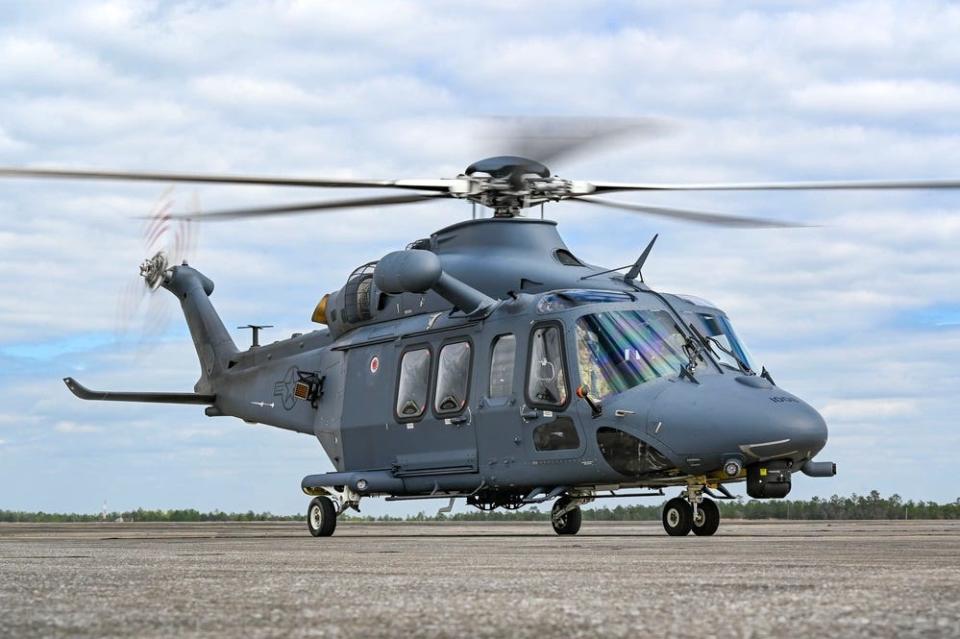
“While we celebrate the MH-139’s ability to fly 50% faster, 50% farther and execute the nuclear security mission with state-of-the-art avionics and autoflight capabilities,” Williams added. “We realize the work is just beginning.”
Keynote speaker General Thomas Bussiere, commander of Air Force Global Strike Command highlighted the difficulties Malmstrom personnel will confront in implanting a major force reconstruction while at the same time maintaining critical military operations.
“This is the only business in the Department of Defense where we transition from legacy to new … where we have to maintain full operational capability for our nation while we do that,” Bussiere said. “It’s the airmen in this audience, and in the missile fields or helicopters right now, who are maintaining our nation’s most important mission, period. That’s a task, quite frankly, that our airmen are up to.”
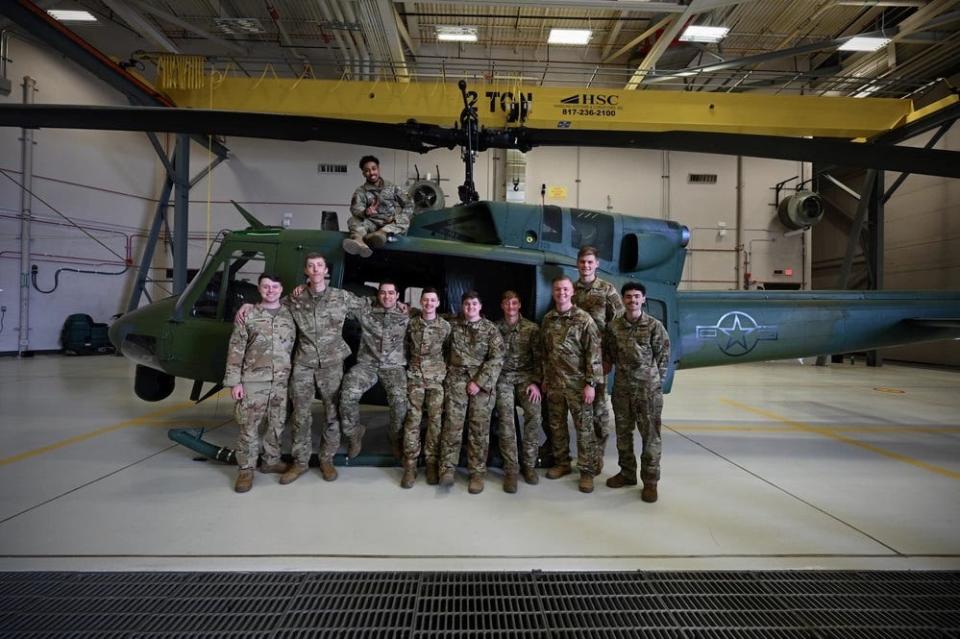
The emphasis on replacing the aging Hueys began following the 9/11 terrorist attacks. In 2016, Montana Sen. Jon Tester,” who currently serves as Chair of the Senate Appropriations Subcommittee on Defense began advocating to replace the nation’s outdated helicopter fleet with a new generation of aircraft. Tester pressed the Air Force in 2018 to provide a detailed timeline on Air Force's replacement plan. He later sent a bipartisan letter urging the Department of Defense to replace the Huey helicopters as quickly as possible.
“The Vietnam War ended when I was in high school,” Tester said Friday. “The folks here have gone above and beyond, even with antiquated equipment, so the modernization of this fleet is long overdue.”
“We live in a world where our advisories like China and Russia, North Korea and Iran want to do everything possible to knock us off as the leading military power in this world,” Tester added. “The mission here is simply too important to be operating with yesterday’s technology. That is why for years we have worked to bring the MH – 139 Grey Wolf helicopters to this base. This aircraft is state-of-the-art and will ensure that Malmstrom’s mission will be able to carry on for decades to come.”
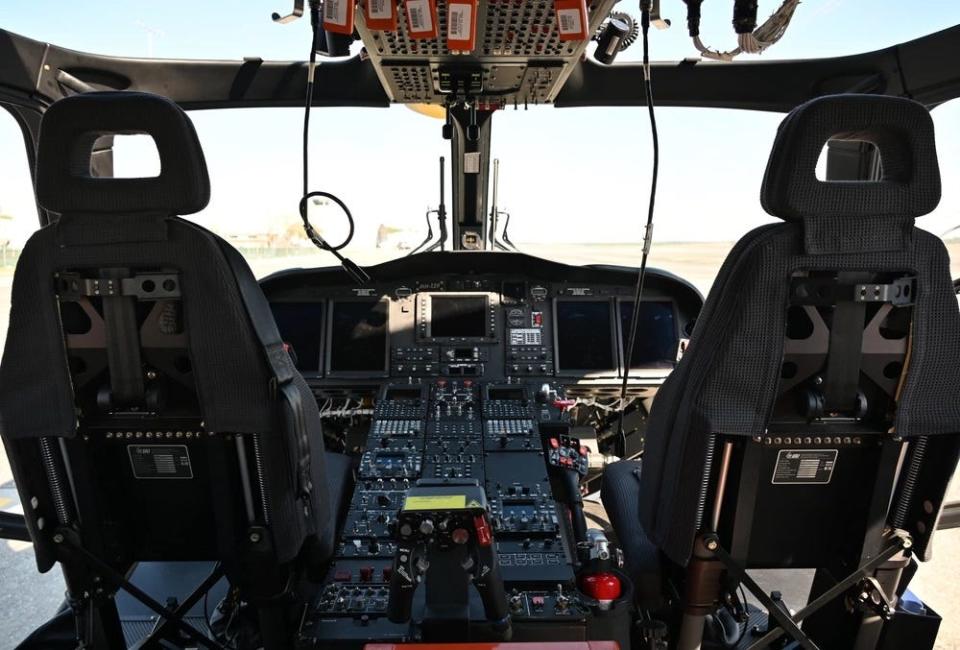
Boeing won a $2.38 billion fixed-price award for the Huey replacement program in September 2018, with an initial anticipated delivery date by 2023. However, delays in obtaining the necessary FAA (Federal Aviation Administration) certifications for the Grey Wolf set the project back.
According to Air & Space Forces magazine the Grey Wolf helicopters have a maximum speed of 167 mph and a range of 890 miles. The are armed with two M240 7.62 mm machine guns and can each accommodate up to 15 passengers including two pilots and a flight engineer.
"(The Grey Wolf helicopters) close the capability gaps of the UH-1N 'Hueys' in areas of speed, range, endurance, payload, and survivability in support of the command’s ICBM missions,” Air Force officials told the Great Falls Tribune in Nov. 2020. “They can also perform civil search and rescue, airlift support, National Capital Region missions, as well as survival school and test support.”
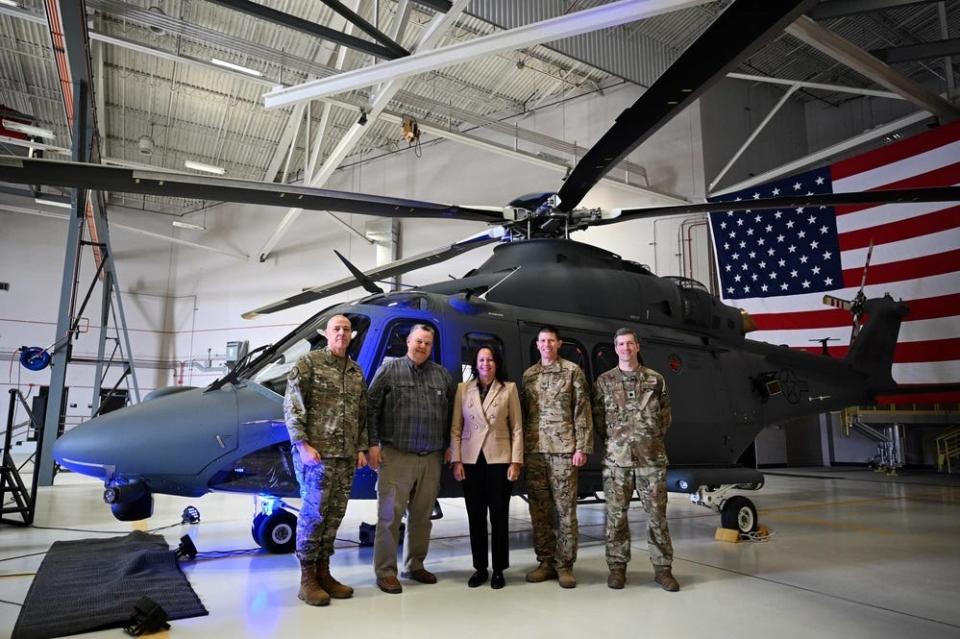
General Bussiere commemorated the fact that Malmstrom’s solid-fuel ICBM launch sites were first in the nation to become operational during the Cuban Missile Crisis in 1962.
“Think about the historical significance of what we are witnessing today in the midst of the warriors who maintained the first capabilities of the Intercontinental Ballistic Missiles right here in Montana at Wing One,” Bussiere said. “When our nation was stressed in the 60s by the Cuban Missile Crisis, who did they call upon? Wing One. Who stood the watch in 1962 that looked down tyranny across the fabric of the world? Wing 1. And who’s going to develop, train, and field the Grey Wolf … to maintain security over our nation’s most important mission? The airman of Wing One, right here in the great state of Montana. That’s pretty cool.”
“Being the first isn’t always easy” said Kathleen Jolivette - vice president and general manager of Boeing Vertical Lift, “but you get to set the standard on how you conduct and expand the mission. With more speed, more range and state of the art avionics the MH-139 provides unrivaled operational capabilities.”
Malmstrom Air Force Base is forecast to receive another transfer of Grey Wolf helicopters in the years ahead, further cementing the base' role in U.S. missile defense.
This article originally appeared on Great Falls Tribune: Grey Wolf new generation helicopters arrive at Malmstrom

